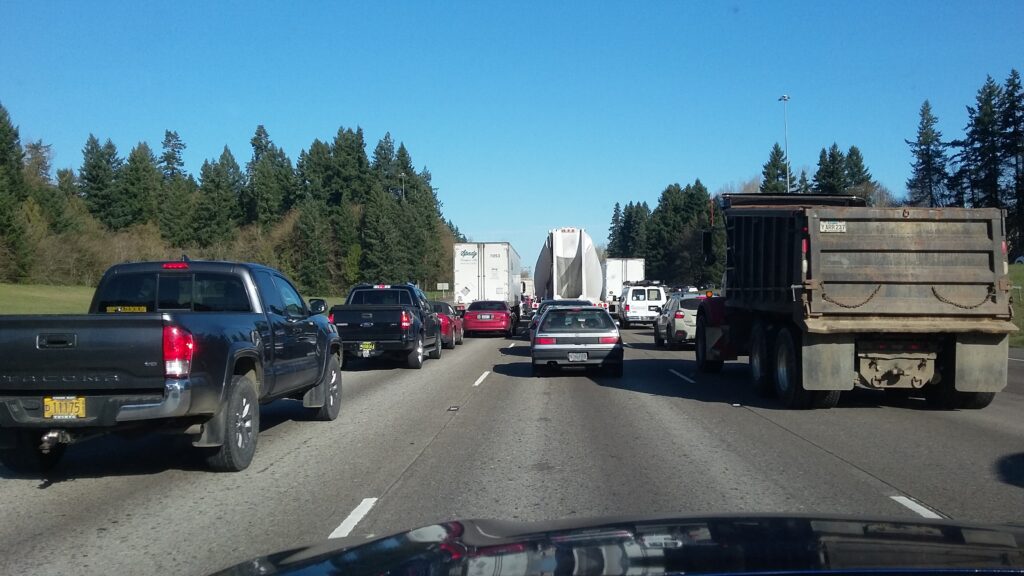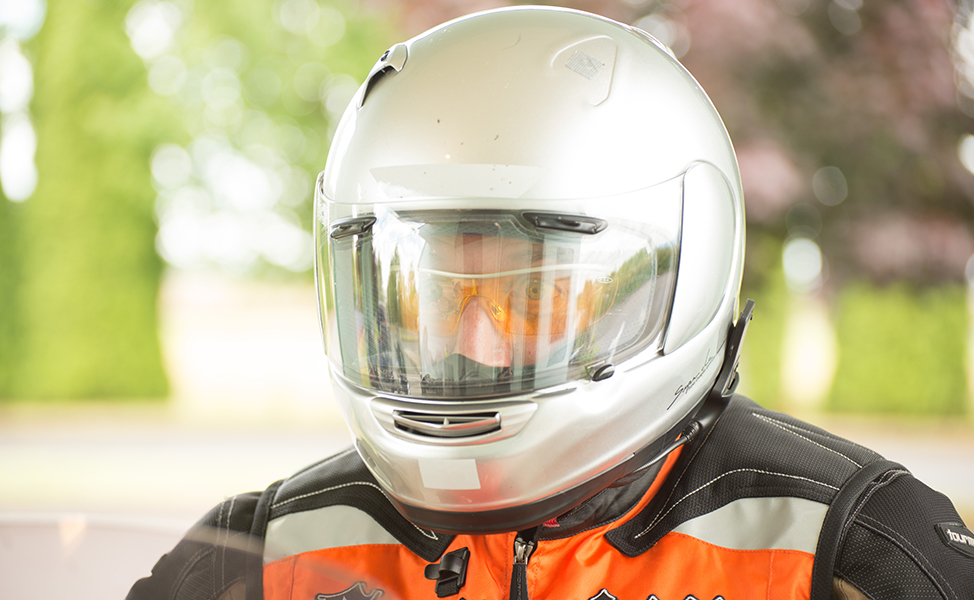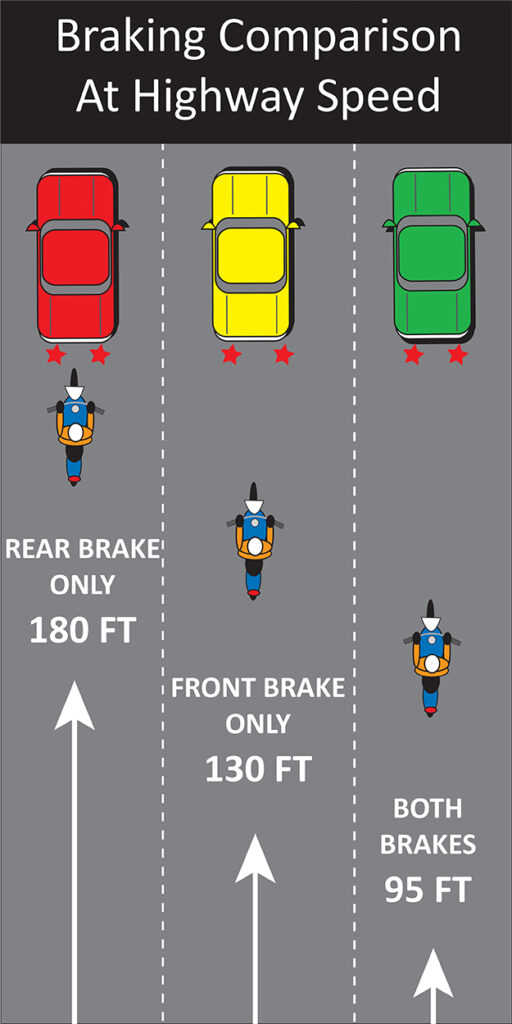Introduction
You are riding on an Interstate freeway at 65 mph in traffic. You are positioning yourself to maintain a good space cushion, but are distracted. Drivers keep creeping up too closely before they pass you. Others simply sit in your blind spot and talk on the phone.
Distracted by what’s going on behind you, you glance up and suddenly, traffic is completely stopped in all three lanes in front of you — a barricade of red brake lights and bumpers. And you’re about to plow into them at 65 mph.


The Wrong Response
Most people in this situation will at least try to stop the bike. Unfortunately, riders often ignore the front brake, lock up the rear wheel, lay the bike down and/or crash into another vehicle. Riders also fail to identify an escape path — a gap big enough for a motorcycle, even if that means using the space between cars to avoid a crash.
Don’t:
- Underuse the front brake
- Overuse the rear brake
- Lay the bike down and/or crash
Tip: Lean the bike harder by counter steering and tightening your line.
The Right Response
While many riders could not avoid this collision, a rider with good visual and braking skills and a good space cushion should be able to stop safely. The correct response is to immediately apply maximum straight-line braking, using both brakes simultaneously, to get your speed down. Remember, in an emergency, 75 percent or more of your stopping power comes from the front brake. Do not lock either wheel or lay the bike down.
Keep your head and eyes up and try to identify a gap between vehicles you can use if you need to. If you can’t get the bike stopped in time (or if you do get it stopped safely, but are in danger of being rear-ended yourself), now is the time to deploy your escape route: Release the brakes, guide the motorcycle into the gap and then stop again.
Do:
- Apply maximum braking
- Keep the bike upright
- Look for an escape path

The Reality
When motorcycles are involved in rear-end crashes on the freeway in Oregon, it’s usually the motorcycle that rear ends another vehicle, not the other way around. Every year, far too many riders are injured and killed when fast-moving traffic stops — and they’re not prepared.
Maximum braking and a well-timed escape route might keep a rider from plowing into parked traffic, but a good visual lead and space cushioning can prevent this situation from developing in the first place. Freeway traffic rarely just “suddenly stops” without warning. Congestion is predictable and rather easy to spot if you’re watching well ahead — 10-20 seconds up the road — and not staring at the vehicles right in front of you. Unfortunately, many riders get caught daydreaming, or are momentarily distracted, and fall into this deadly trap.
If the concepts of maximum braking, visual lead or space cushioning are unfamiliar to you, or if you have trouble identifying escape routes, Team Oregon recommends you seek help: Enroll in a training course and get some instruction and practice in these critical skills.